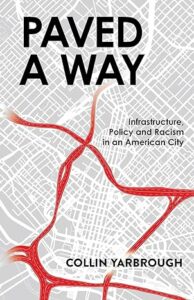Our homeless response system is committed to advancing racial equity and continually improving our system to better serve our neighbors in a more equitable way. We believe that with an understanding and consideration of our nation’s history and discriminatory policies, we can utilize lessons learned to create and maintain a system that is inclusive and fair for all.
Systemic oppression and racism have contributed to an overrepresentation of Black households in the homeless response system nationally and locally. To learn more about what this means and have a deeper understanding of the issue, we have provided several great resources for you to utilize!
1. A Brief Timeline of Race and Homelessness in America
This brief timeline lays out the history of the connections between race and homelessness in the United States and is intended to inform the work ahead in pursuit of racial equity.
2. Homelessness and Racial Disparities

3. Racial Inequity and Homelessness: Findings from the SPARC Study
4. Does Race Matter in Addressing Homelessness?
5. Paved A Way: Infrastructure, Policy and Racism in an American City
Systemic oppression is not contained within Dallas—it can be found throughout the United States.

6. Equipping the Homeless Sector with Racial Equity Tools
Homelessness is a racial justice issue. Research shows that Black and Native Americans experience homelessness at disproportionately high rates, even when we control for disparities in poverty level.
This means that, like so many other systems of care in America impacted by racism, the homeless response system produces racial disparities. The system can maintain or exacerbate these disparities — or work to dismantle them.
7. New CoC Racial Equity Analysis Tool - HUD
HUD is pleased to announce the availability of the Continuum of Care (CoC) Racial Equity Analysis Tool to help communities understand who is accessing their homeless service system and what outcomes those families and individuals are realizing.
Over the past year the United States Interagency Council on Homelessness (USICH) has been highlighting promising practices from the field on how to better understand and address the overrepresentation of people of color among those experiencing homelessness



